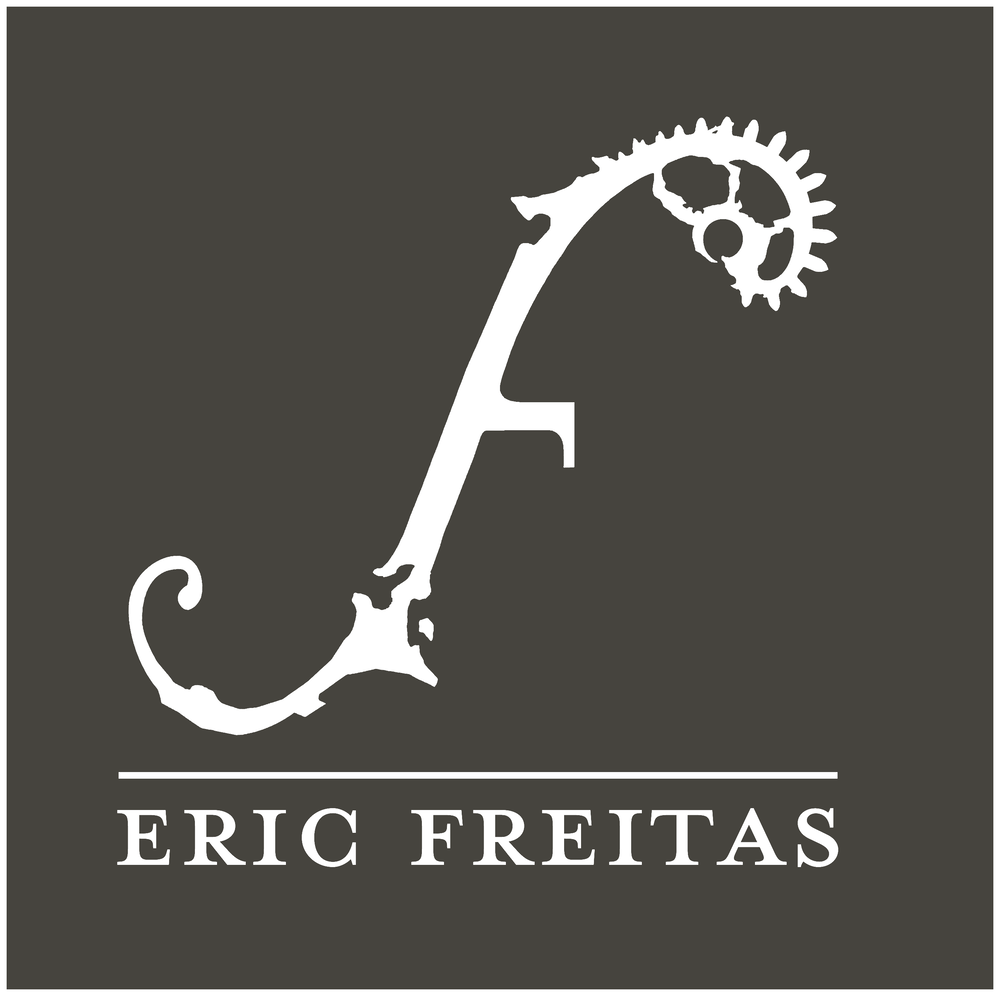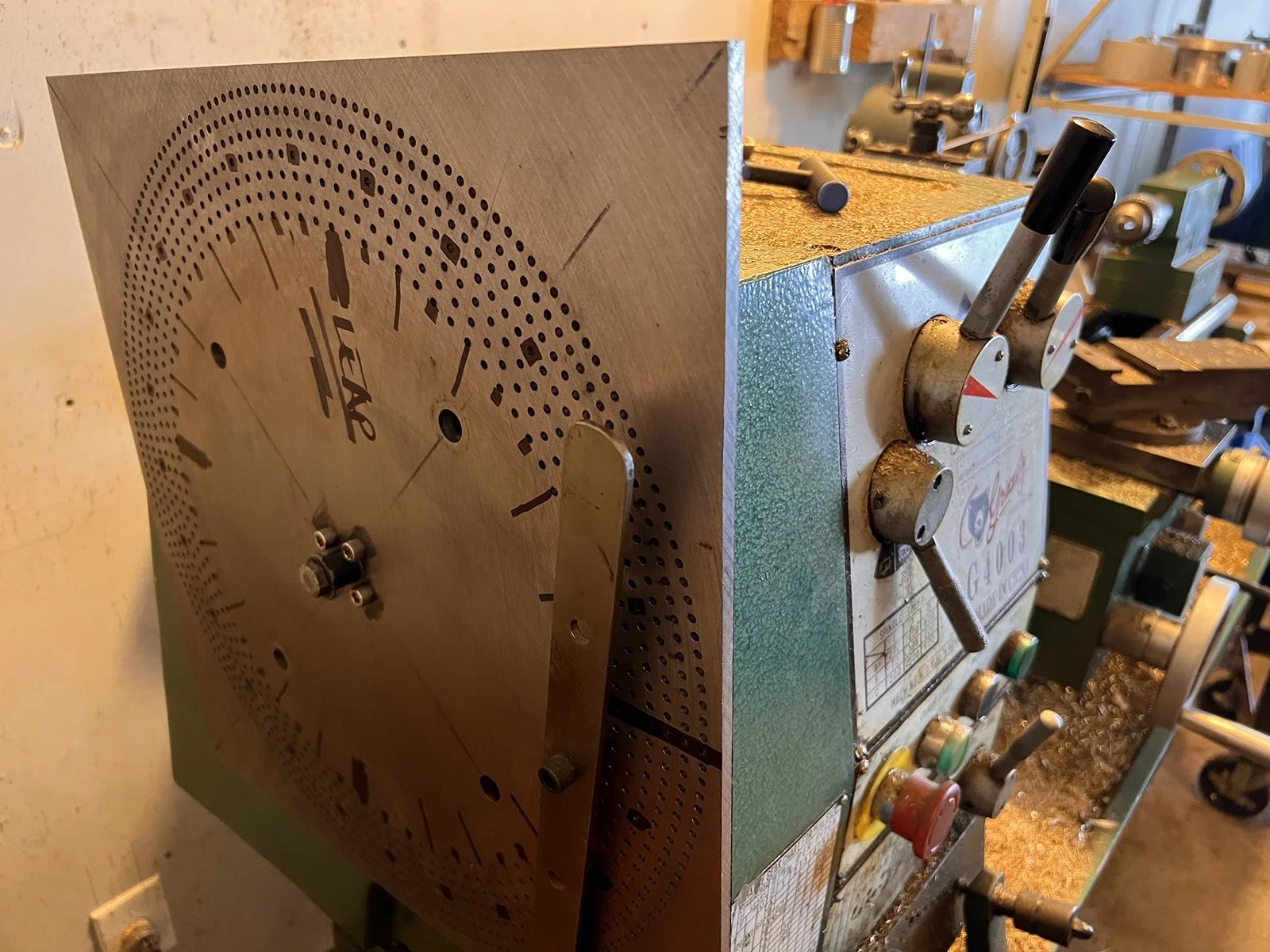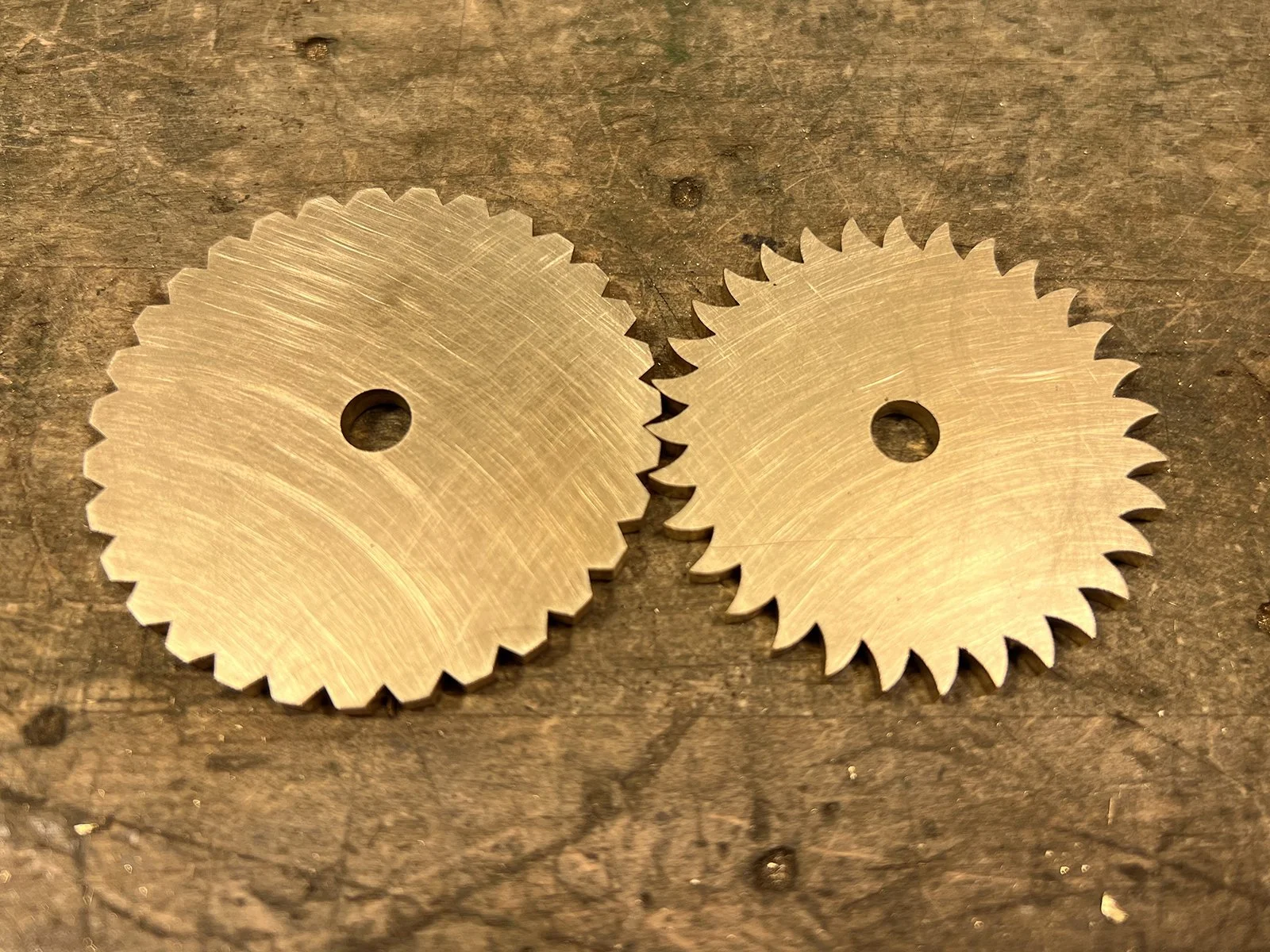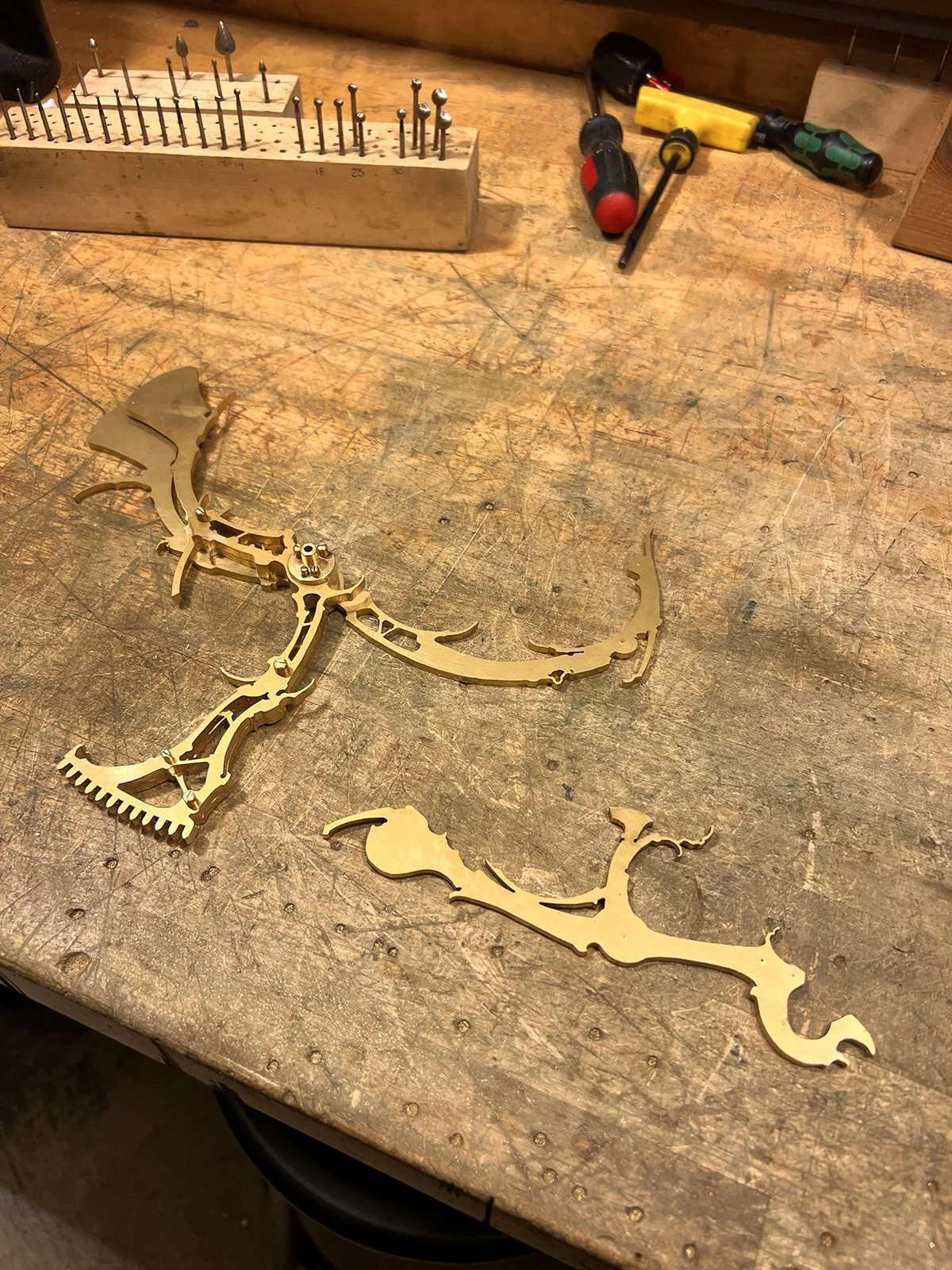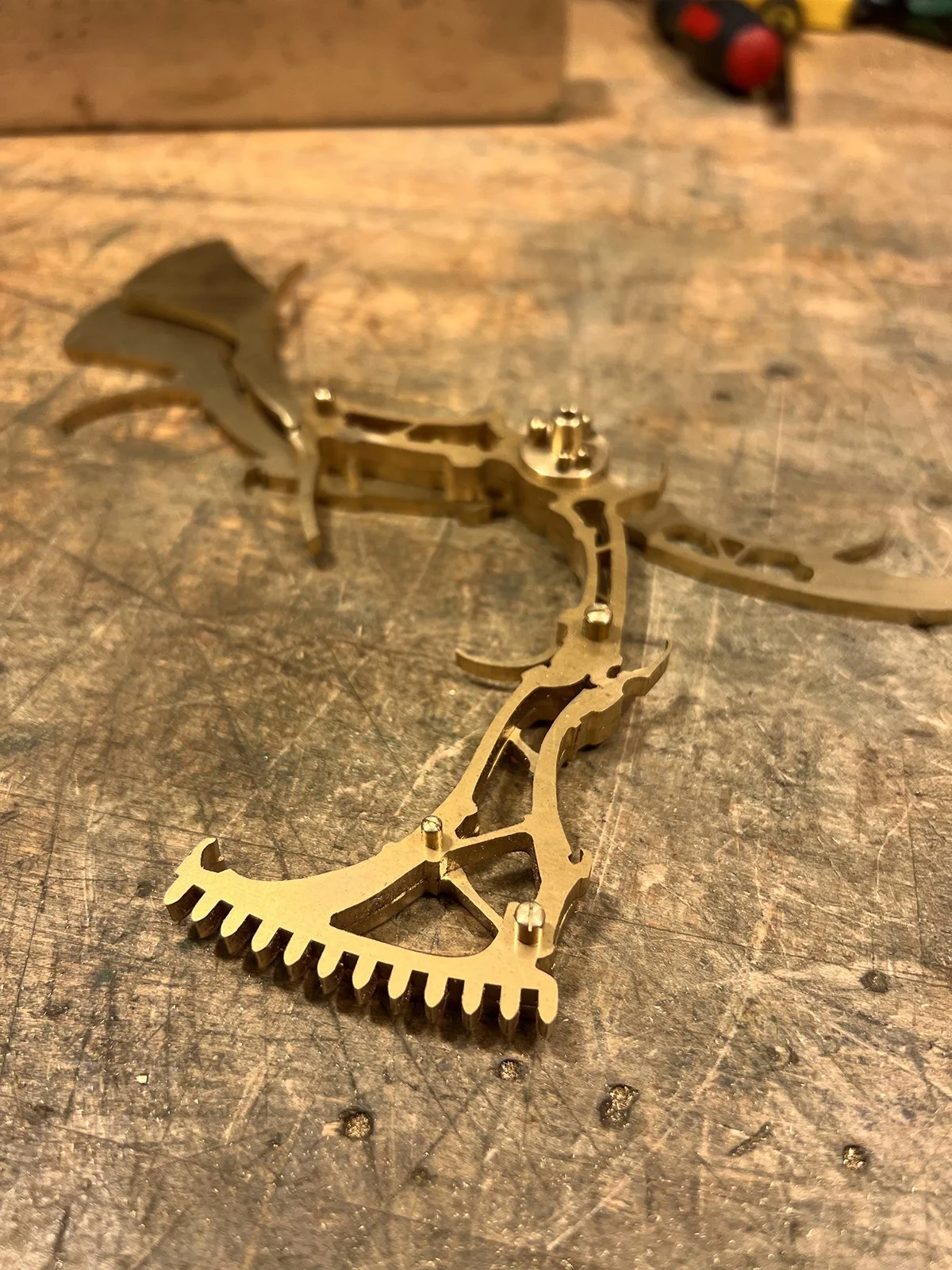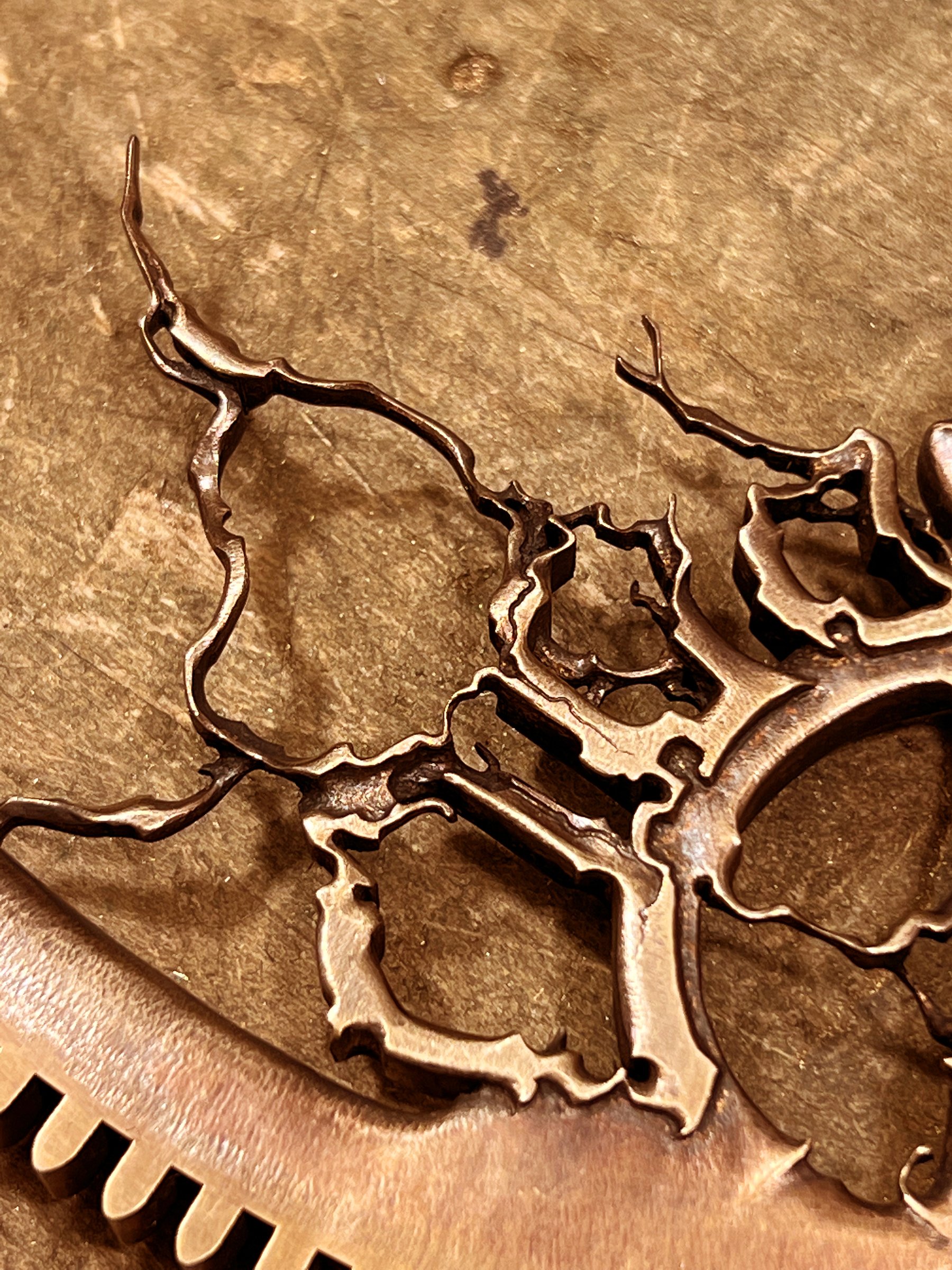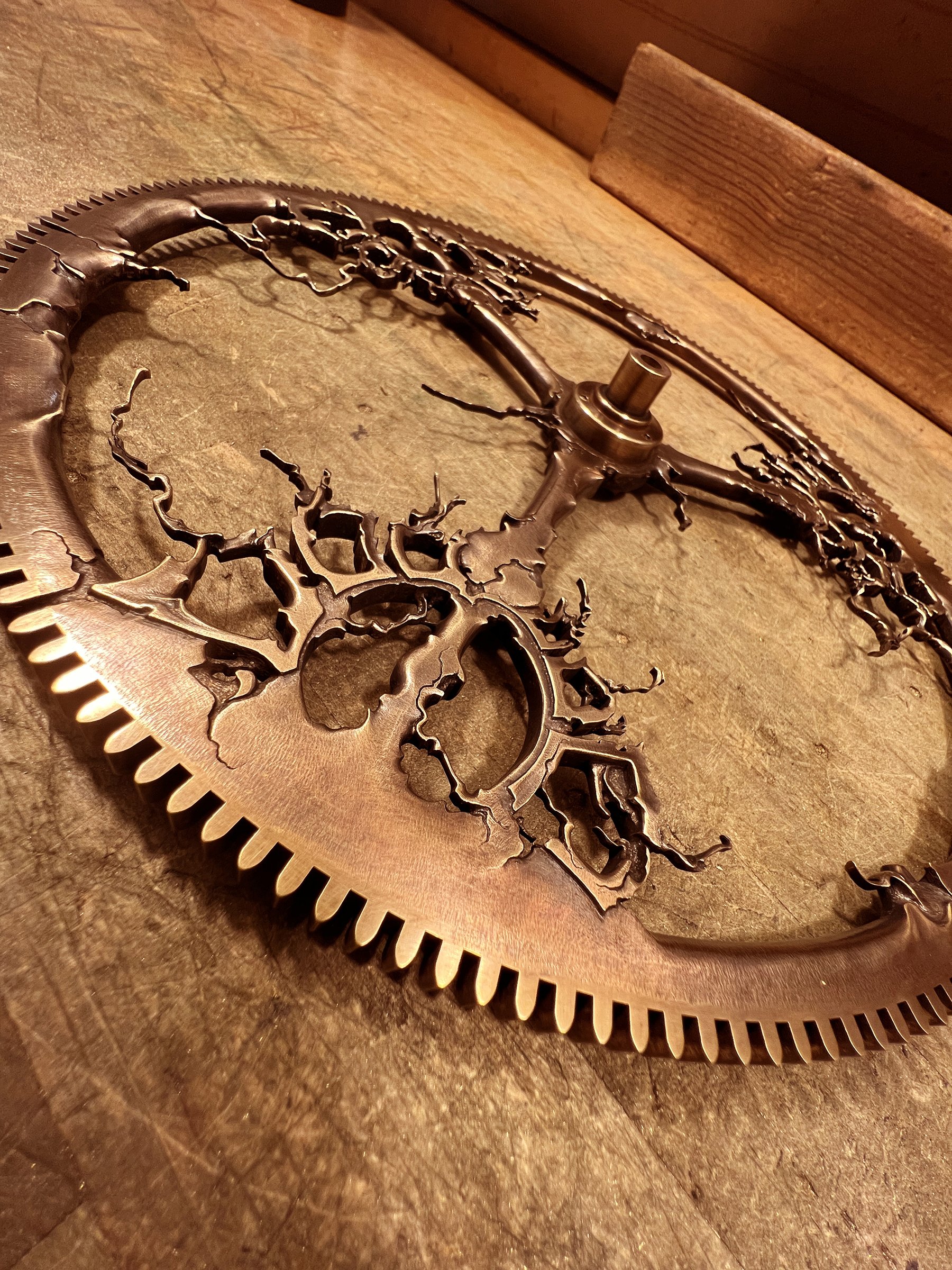Time for some computer aided design - emphasis on the design. My CAD program of choice is Rhinoceros, thus the title.
I’ve changed my tune quite a bit over the years when it comes to using CAD to create my work with automated machines. I’ve arrived at the conclusion that as long as my pencil and brain are steering the ship it’s a very valuable tool.
In the past my hangup with using computers was that the tools in the CAD program start to dictate and influence the look of things, often making them overly perfect and lifeless. But if you can bring your pencil drawings into the program with all of their character, and perfectly trace those imperfect lines, then you can get the best of both worlds.
It’s also important to mention that my commissions crossed a size threshold that made it impossible to fabricate them by hand. This one is no exception, being 6 feet wide and cut from thick 1/4” plates.
One note: I’ve just realized that before I can finish this I’ll have to make the biggest gear in the clock. The spot where the winding key for the weight will be needs to be exact, and I won’t know that placement until I have the gear to physically mesh it with the pinion and get the precise distance between the arbors. While I can certainly calculate that distance with the math, it’s more accurate to physically mesh the gear and pinion together and measure the distance.
Also, I’m moving soon! Pretty soon all of my content will be shot in a new shop. Can’t wait!
